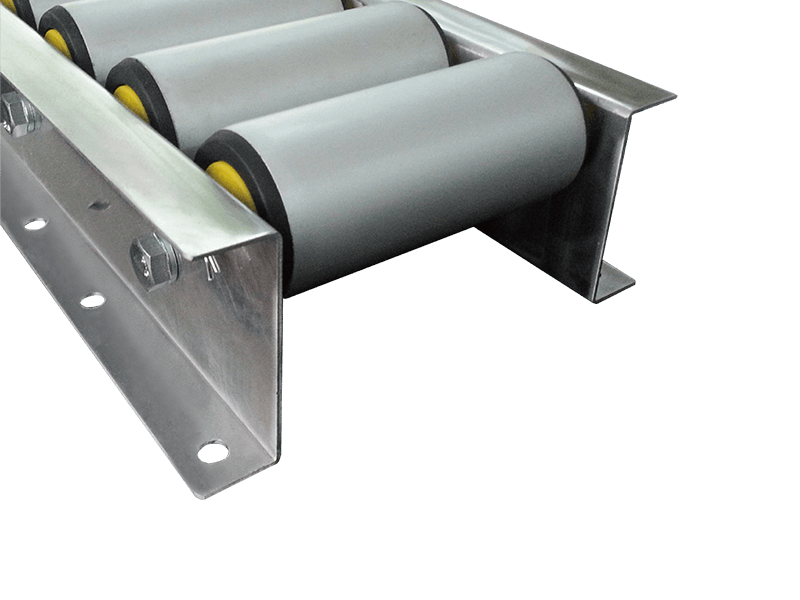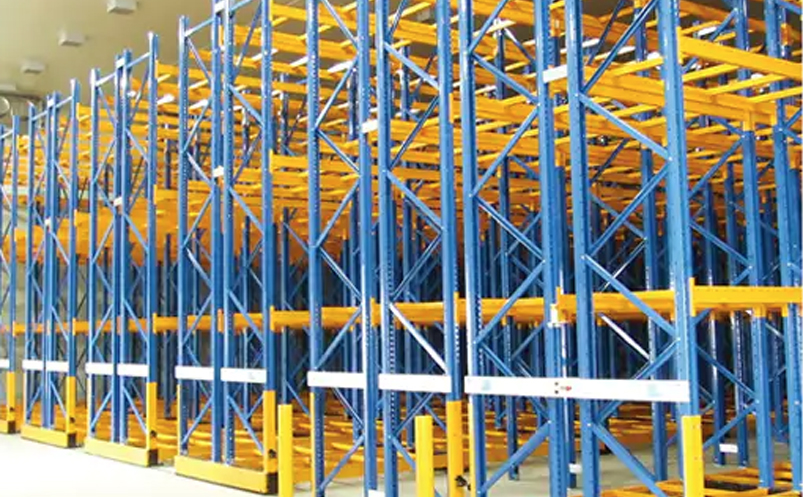Aluminum roller conveyors are widely used in material handling systems for industries such as manufacturing, packaging, logistics, and food processing. Their popularity stems from their lightweight yet durable construction, corrosion resistance, and versatility in design. However, as with any mechanical equipment that involves moving parts, safety is paramount. Accidents involving conveyors can lead to injuries, downtime, and significant operational costs if preventive measures are not taken.
Adding safety features to aluminum roller conveyors not only protects workers but also enhances productivity by reducing interruptions caused by accidents or equipment damage.
1. Guarding and Protective Covers
One of the fundamental safety measures for any conveyor system is guarding. Roller conveyors, in particular, have exposed rotating parts that can pose pinch-point hazards.
Key options for guarding include:
- Side Guards: Aluminum side rails or stainless-steel barriers prevent items from falling off the conveyor and protect operators from accidentally coming into contact with moving rollers.
- Fixed Guards: For sections where maintenance access is not required, fixed guards or shields can cover hazardous areas permanently.
- Interlocked Guards: In areas requiring periodic access, interlocked guards can automatically shut off power when opened, ensuring maintenance personnel cannot access moving rollers.
- End Caps on Rollers: Open roller ends can snag clothing or fingers. Fitting smooth end caps eliminates this hazard and improves the overall safety and aesthetics of the conveyor.
These guarding systems are especially important when conveyors are positioned near walkways or workstations where operators frequently interact with the line.
2. Emergency Stop (E-Stop) Systems
An emergency stop mechanism is one of the most critical safety additions to any conveyor system. It provides workers the ability to halt the conveyor instantly in case of an emergency.
Common configurations include:
- Pull-Cord Switches: A pull-cord running along the length of the conveyor allows operators to stop the conveyor from any point. This is ideal for long conveyor runs.
- Mushroom-Head Push Buttons: Placed at strategic points such as loading and unloading zones, these large, easy-to-press buttons offer quick shutdown.
- Wireless Emergency Stops: In modern facilities, wireless E-stop systems are increasingly used for flexibility and faster installation.
It’s vital that all emergency stop devices are clearly marked, easily accessible, and regularly tested to ensure reliability. Regular training should also be provided so workers know how and when to use them.
3. Safety Interlocks and Sensors
Automation has made it possible to integrate advanced sensor-based safety systems into aluminum roller conveyors. These devices detect unsafe conditions or obstructions and automatically trigger a stop or slowdown.
Common sensor-based features include:
- Photoelectric Sensors: Detect product jams, unauthorized access, or obstructions along the conveyor path.
- Proximity Sensors: Used to detect when parts or workers come too close to hazardous zones.
- Load Sensors: Prevent overloading by monitoring the weight of items on the conveyor.
- Speed Monitors: Detect abnormal speeds that may indicate motor faults or slipping rollers.
Safety interlocks can also be used on removable guards and access panels to ensure the conveyor cannot be started while they are open.
4. Anti-Pinch and Safety Roller Design
Rollers are the heart of an aluminum conveyor, but they also represent one of the greatest safety hazards. To minimize the risk of pinch injuries, modern conveyors can incorporate several design improvements:
- Close Roller Spacing: Reducing the gaps between rollers minimizes the risk of small items or fingers being caught.
- Plastic Sleeved Rollers: Soft coverings such as PVC or polyurethane sleeves can cushion impact and reduce surface friction, making them safer to touch.
- Recessed or Covered Rollers: For gravity conveyors or systems near operator work zones, using partial covers or recessed rollers helps eliminate direct exposure to rotating components.
These small design improvements significantly reduce the likelihood of injury, especially in facilities where manual handling near conveyors is frequent.
5. Speed Control and Soft Start Systems
Conveyors that start or stop abruptly can cause product spillage or destabilization, potentially leading to unsafe conditions for operators. Incorporating variable speed drives (VFDs) or soft-start controls helps smooth acceleration and deceleration, improving both safety and product handling.
Advantages include:
- Preventing sudden jerks that may cause items to shift or fall.
- Reducing mechanical wear on motors and rollers.
- Allowing operators to adjust speeds based on product type or working conditions.
In aluminum roller conveyors equipped with motorized rollers, electronic controllers can provide fine-grained speed adjustment and safety shutdown functions.

6. Noise and Vibration Reduction Features
While not always considered a direct safety hazard, excessive noise and vibration can create unsafe working conditions by increasing fatigue and reducing situational awareness. To mitigate these risks:
- Use precision bearings and balanced rollers to reduce mechanical noise.
- Apply rubber mounts or vibration dampers on conveyor supports.
- Use polyurethane or PVC-coated rollers for quieter operation.
Maintaining a quieter, smoother-running conveyor not only protects workers’ hearing but also reduces stress and enhances communication in busy production environments.
7. Slip-Resistant and Ergonomic Design
In many operations, workers walk or work alongside conveyors for extended periods. Improving the ergonomic and slip-resistant aspects of the conveyor setup enhances safety significantly.
Recommendations include:
- Installing non-slip flooring or anti-fatigue mats alongside conveyors.
- Adjusting conveyor height to match ergonomic standards, minimizing bending or overreaching.
- Incorporating guardrails or handrails for elevated or overhead conveyor systems.
An ergonomically designed conveyor layout reduces musculoskeletal strain and ensures that workers can operate safely and efficiently.
8. Lockout/Tagout (LOTO) Provisions
During maintenance or repair, it is crucial that conveyors cannot be accidentally powered on. Implementing lockout/tagout procedures ensures energy sources are isolated before work begins.
For aluminum roller conveyors, LOTO systems typically involve:
- Lockable disconnect switches on power supplies.
- Tagging systems to indicate maintenance is in progress.
- Clearly marked isolation points for electric or pneumatic power sources.
These procedures are essential for compliance with occupational safety standards such as OSHA, and they help protect maintenance personnel from accidental startups.
9. Regular Maintenance and Safety Audits
Even the best safety features can become ineffective without regular inspection and maintenance. A structured preventive maintenance plan should include:
- Checking roller alignment and wear.
- Inspecting guards, sensors, and emergency stops for damage.
- Ensuring all warning labels and signs remain legible.
- Conducting periodic safety audits to identify potential hazards.
Maintenance logs should be kept for accountability and to track recurring issues. Proper maintenance not only ensures safety but also prolongs the lifespan of the aluminum conveyor.
10. Clear Safety Signage and Operator Training
Finally, no safety system is complete without education and communication. Workers who understand the risks and proper operating procedures are far less likely to cause or suffer an accident.
Effective strategies include:
- Posting warning signs near pinch points, E-stop buttons, and loading areas.
- Providing operator training on startup, shutdown, and emergency procedures.
- Conducting refresher sessions periodically or after equipment modifications.
When workers are informed and alert, safety features become more effective because they are used properly and consistently.
Conclusion
Aluminum roller conveyors are essential components of modern material handling systems. Their modular structure, corrosion resistance, and lightweight nature make them an excellent choice for a wide range of industries. However, the safety of operators and maintenance personnel must remain a top priority.
By integrating key safety features—such as guards, emergency stops, sensors, ergonomic designs, and lockout systems—companies can significantly reduce risks while improving operational efficiency. Regular inspections, clear signage, and ongoing worker training further enhance these protections.
Ultimately, safety should be seen not as an added cost, but as an investment in reliability, productivity, and worker well-being. A well-protected aluminum roller conveyor system is not only safer—it is also more efficient, more durable, and better aligned with the values of modern industrial operations.







